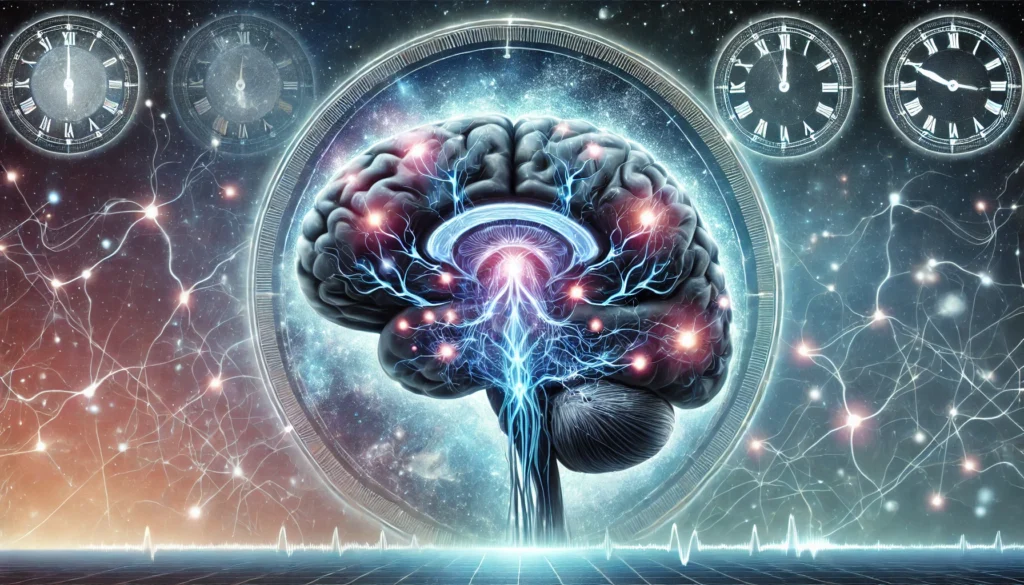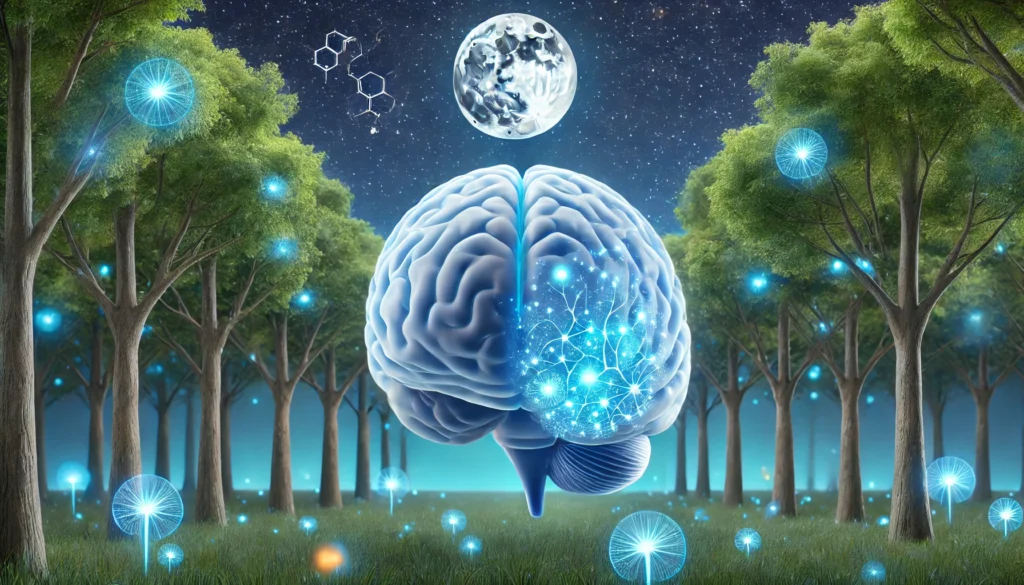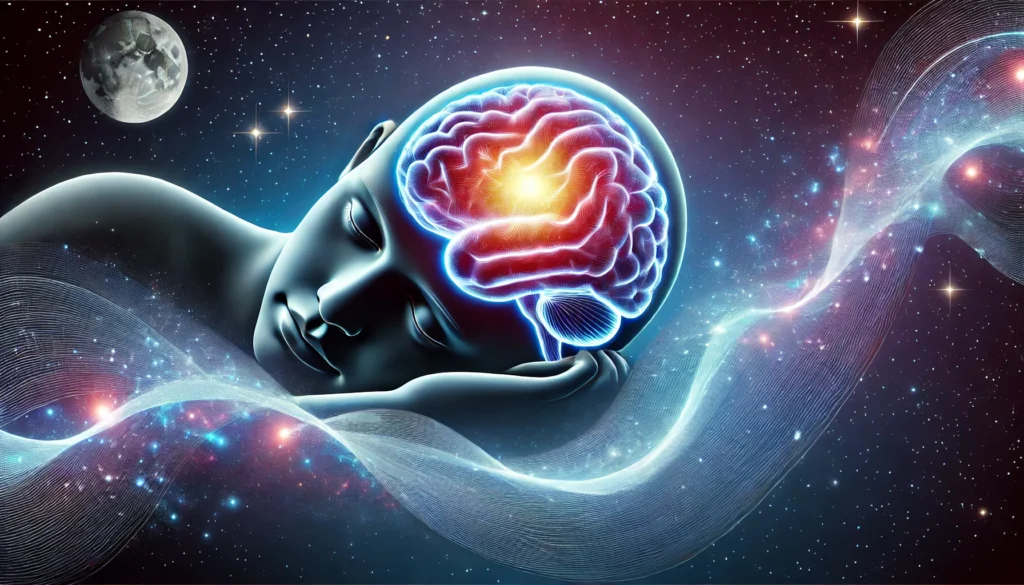Sleep is an essential biological function that supports nearly every aspect of human health. The intricate connection between the brain and sleep has been the subject of extensive scientific research, with particular emphasis on understanding what part of the brain regulates sleep and wake cycles. Sleep plays a critical role in cognitive function, emotional regulation, physical health, and overall well-being. While it may seem like a passive state, sleep involves complex neurological processes, and the brain remains active during sleep, engaging in vital functions necessary for memory consolidation, toxin removal, and cellular repair. In this article, we will explore the key brain structures involved in sleep regulation, the mechanisms that control sleep and wake cycles, the impact of sleep on brain health, and the consequences of sleep deprivation on cognitive and physical function.
You may also like : Best Things for Brain Health: Expert-Backed Strategies to Keep Your Mind Sharp
The Sleep-Wake Cycle: A Delicate Balance
The sleep-wake cycle is a finely tuned system governed by specific regions of the brain, primarily the hypothalamus, brainstem, and thalamus. This cycle is regulated by a combination of circadian rhythms and homeostatic sleep drive, ensuring that the body maintains an appropriate balance between wakefulness and rest. Circadian rhythms are the body’s internal clock, influenced by external factors such as light exposure, while homeostatic sleep drive increases the pressure to sleep as wakefulness is prolonged. Together, these processes dictate sleep onset, duration, and quality.
One of the key players in sleep regulation is the suprachiasmatic nucleus (SCN) of the hypothalamus. The SCN acts as the master clock, synchronizing bodily functions with environmental cues, particularly light. When darkness falls, the SCN signals the pineal gland to release melatonin, a hormone that promotes sleep. Conversely, exposure to light suppresses melatonin production and signals wakefulness. This process highlights how external stimuli influence what part of the brain controls sleep and wake cycles.
Additionally, the brainstem, specifically the reticular activating system (RAS), plays a crucial role in maintaining wakefulness. The RAS is responsible for filtering sensory information and regulating alertness. When activated, it promotes arousal and consciousness, whereas inhibition of the RAS facilitates sleep onset. The thalamus also plays a key role, as it serves as a relay station for sensory input. During wakefulness, the thalamus transmits sensory information to the cortex, but during sleep, it reduces sensory transmission, allowing the brain to enter a restful state. Understanding the role of these structures provides insight into what part of the brain regulates sleep and its fundamental importance in maintaining overall health.
Brain Activity During Sleep: The Role of Neural Oscillations
While the body rests, the brain remains highly active, engaging in distinct neural oscillations that define different stages of sleep. Sleep is broadly divided into two categories: rapid eye movement (REM) sleep and non-rapid eye movement (NREM) sleep. NREM sleep consists of three stages, each characterized by varying levels of brain activity and physiological changes.
In the initial stage of NREM sleep, brain activity begins to slow, and the transition from wakefulness to sleep occurs. The second stage, often referred to as light sleep, is marked by the presence of sleep spindles and K-complexes, which are bursts of brain activity believed to play a role in memory consolidation. The third stage, known as deep sleep or slow-wave sleep (SWS), is characterized by high-amplitude, low-frequency delta waves. Deep sleep is essential for physical restoration, immune function, and metabolic regulation.
REM sleep, on the other hand, is associated with heightened brain activity, resembling wakefulness. This stage is when most dreaming occurs and is crucial for cognitive processes such as learning, emotional processing, and creativity. The brainstem plays a pivotal role in generating REM sleep, as it inhibits motor activity to prevent dream enactment. The complex interplay between these sleep stages underscores why sleep is important for the brain and overall cognitive health.

Neurological Structures Involved in Sleep Regulation
Several brain structures contribute to sleep regulation, with each playing a unique role in modulating sleep architecture. The hypothalamus, in addition to housing the SCN, contains neurons that promote sleep and wakefulness. The ventrolateral preoptic nucleus (VLPO) of the hypothalamus inhibits wake-promoting regions during sleep, facilitating the transition into rest. Conversely, the tuberomammillary nucleus (TMN) promotes wakefulness by releasing histamine, a neurotransmitter associated with alertness.
The basal forebrain is another critical region involved in sleep regulation. It is responsible for producing adenosine, a neuromodulator that accumulates during wakefulness and promotes sleep by inhibiting arousal systems. Caffeine, a widely consumed stimulant, exerts its effects by blocking adenosine receptors, thereby reducing sleep pressure and increasing wakefulness. Understanding the role of the basal forebrain further elucidates what part of the brain controls sleep and wake cycles.
The amygdala, a structure associated with emotional processing, becomes highly active during REM sleep. This suggests a potential role for REM sleep in emotional regulation and mental health. Dysfunctions in REM sleep have been linked to mood disorders such as depression and anxiety, highlighting the intricate relationship between sleep and psychological well-being.
The Impact of Sleep on Brain Health and Cognitive Function
Sleep is essential for cognitive function, memory consolidation, and emotional regulation. During sleep, the brain undergoes synaptic pruning, a process that strengthens important neural connections while eliminating redundant ones. This enhances learning and problem-solving abilities, making quality sleep essential for academic and professional performance.
Moreover, sleep plays a vital role in clearing metabolic waste from the brain. The glymphatic system, a network of channels in the brain, becomes highly active during sleep, facilitating the removal of toxins such as beta-amyloid. Accumulation of beta-amyloid is a hallmark of neurodegenerative diseases like Alzheimer’s, emphasizing why sleep is important for the brain in preventing cognitive decline.
Chronic sleep deprivation, on the other hand, has detrimental effects on brain function. Prolonged lack of sleep impairs attention, decision-making, and emotional stability. It also increases the risk of developing neurological disorders, cardiovascular disease, and metabolic conditions. Understanding how the brain functions while sleeping highlights the profound impact of sleep on overall health and longevity.

Frequently Asked Questions (FAQ) on Sleep and Brain Function
1. What part of the brain affects sleep the most, and how does it work? The hypothalamus is one of the most critical structures affecting sleep, particularly its suprachiasmatic nucleus (SCN). The SCN functions as the body’s internal clock, regulating sleep and wake cycles based on light exposure. Additionally, the hypothalamus contains sleep-promoting neurons that release neurotransmitters such as GABA, which help induce sleep. The brainstem also plays a role by controlling the transition between wakefulness and sleep through the reticular activating system (RAS). Disruptions in these areas can lead to sleep disorders, highlighting the importance of maintaining a consistent sleep schedule to support brain function while sleeping.
2. How does the brain regulate the sleep-wake cycle, and why is it important? The brain regulates the sleep-wake cycle through the interplay of circadian rhythms and homeostatic sleep drive. Circadian rhythms are controlled by the SCN in response to light and darkness, signaling the production of melatonin to promote sleep at night. Homeostatic sleep drive, on the other hand, builds up sleep pressure the longer a person remains awake, ensuring a balance between wakefulness and rest. This intricate regulation ensures optimal cognitive performance, mood stability, and physical health. Understanding what part of the brain controls sleep and wake cycles can help individuals adopt habits that enhance sleep quality.
3. What happens to brain activity during sleep, and why is it essential? Brain activity during sleep varies by sleep stage, with non-rapid eye movement (NREM) sleep showing slow-wave activity crucial for memory consolidation and cellular repair. REM sleep, however, exhibits brain activity patterns similar to wakefulness, supporting emotional regulation and creativity. During deep sleep, the brain undergoes synaptic pruning, eliminating unnecessary neural connections while strengthening essential ones. The glymphatic system also becomes more active, clearing out toxins that accumulate during the day. Understanding the role of brain activity when sleeping reinforces the importance of prioritizing rest for long-term cognitive health.
4. How does sleep impact cognitive function and mental clarity? Sleep is essential for cognitive function, particularly in areas related to memory, learning, and problem-solving. The brain remains active during sleep, organizing and consolidating new information while discarding irrelevant data. REM sleep is particularly important for creativity and emotional resilience, as it strengthens neural connections associated with problem-solving and mood regulation. Chronic sleep deprivation impairs attention, decision-making, and reaction times, increasing the risk of accidents and cognitive decline. Recognizing why sleep is important for the brain can motivate individuals to develop better sleep hygiene practices.
5. What part of the brain controls sleep disorders like insomnia and narcolepsy? Sleep disorders are often linked to dysfunctions in multiple brain regions, including the hypothalamus, brainstem, and thalamus. Insomnia, for example, may be caused by hyperactivity in the hypothalamus, leading to difficulties in transitioning to sleep. Narcolepsy, a disorder characterized by excessive daytime sleepiness and sudden sleep attacks, is associated with the loss of hypocretin-producing neurons in the hypothalamus. These disruptions affect brain function during sleep, leading to fragmented rest and poor overall health. Identifying what part of the brain controls sleep disorders can aid in developing targeted treatments for these conditions.
6. How does sleep affect the brain’s ability to process emotions? The amygdala, which regulates emotional responses, is highly active during REM sleep, influencing how individuals process stress and emotions. Poor sleep can lead to an overactive amygdala, resulting in heightened emotional reactivity and difficulty managing stress. Sleep deprivation also impairs communication between the amygdala and the prefrontal cortex, reducing emotional regulation and increasing the risk of mood disorders. Healthy sleep patterns help maintain balanced emotional responses, improving mental resilience and interpersonal relationships. This connection underscores why sleep and brain health are closely linked.
7. Can improving sleep quality enhance brain health and longevity? Yes, quality sleep is directly linked to brain health and longevity. Studies show that consistent sleep supports cognitive function, reduces the risk of neurodegenerative diseases, and promotes emotional stability. The glymphatic system, responsible for clearing waste from the brain, functions most efficiently during deep sleep, preventing the buildup of harmful proteins like beta-amyloid. Sleep also regulates hormones that control metabolism, immune function, and cellular repair. Prioritizing sleep can enhance overall well-being, demonstrating why sleep is important for the brain at every stage of life.
8. What part of the brain controls sleepiness, and how does it interact with wakefulness? Sleepiness is primarily controlled by the hypothalamus and the basal forebrain, which regulate neurotransmitter release to promote sleep or alertness. Adenosine, a sleep-promoting chemical, accumulates throughout the day and signals the brain when rest is needed. The brainstem and thalamus also play roles in transitioning between sleep and wake states by modulating sensory input. External factors such as blue light exposure and irregular sleep schedules can disrupt these processes, leading to excessive daytime sleepiness. Understanding what part of the brain controls sleepiness can help individuals make informed lifestyle choices to improve energy levels and alertness.
9. How does aging impact brain function during sleep? As people age, changes in brain function during sleep can lead to alterations in sleep patterns, including lighter and more fragmented sleep. The reduction of slow-wave sleep in older adults affects memory consolidation and cognitive function. The brain’s ability to regulate sleep and wake cycles may also decline, leading to increased sleep disturbances. Additionally, neurodegenerative conditions such as Alzheimer’s disease are linked to disrupted sleep patterns, further highlighting the importance of maintaining healthy sleep habits. Research on sleep and brain health suggests that improving sleep quality can mitigate some age-related cognitive decline.
10. What are some effective ways to support brain function while sleeping? Several strategies can enhance brain function while sleeping, including maintaining a consistent sleep schedule, reducing exposure to artificial light before bedtime, and creating a relaxing sleep environment. Engaging in regular physical activity and following a nutrient-rich diet can also support brain health and sleep quality. Practicing mindfulness and stress management techniques, such as meditation and deep breathing, can improve sleep onset and duration. Limiting stimulants like caffeine in the evening can help maintain a natural sleep-wake cycle. These habits reinforce why sleep is important for the brain and overall well-being.

Conclusion: The Indispensable Role of the Brain in Sleep Regulation
The brain orchestrates the complex process of sleep, regulating sleep-wake cycles through intricate neural networks. From the hypothalamus to the brainstem, each structure plays a crucial role in maintaining balance between rest and wakefulness. The interplay between circadian rhythms, homeostatic sleep drive, and neurotransmitter activity ensures that sleep remains a restorative and essential function. As research continues to uncover the depths of sleep science, it becomes increasingly clear that prioritizing quality sleep is fundamental to cognitive enhancement, emotional well-being, and overall longevity. By understanding what part of the brain controls sleep and wake cycles, individuals can make informed lifestyle choices that promote optimal health and mental performance.
sleep cycle regulation, brain waves during sleep, deep sleep benefits, REM sleep function, circadian rhythm health, neurological sleep patterns, melatonin and brain health, sleep deprivation effects, cognitive function and sleep, neuroplasticity during sleep, sleep hygiene tips, hormone regulation in sleep, memory consolidation in sleep, restorative sleep practices, brain detoxification at night, healthy sleep habits, aging and sleep patterns, emotional regulation and sleep, sleep science research, optimizing sleep quality
Further Reading:
Hypothalamic regulation of the sleep/wake cycle
Functions and Mechanisms of Sleep
Sleep Stages: Understanding the Sleep Cycle
Disclaimer
The information contained in this article is provided for general informational purposes only and is not intended to serve as medical, legal, or professional advice. While Health11News strives to present accurate, up-to-date, and reliable content, no warranty or guarantee, expressed or implied, is made regarding the completeness, accuracy, or adequacy of the information provided. Readers are strongly advised to seek the guidance of a qualified healthcare provider or other relevant professionals before acting on any information contained in this article. Health11News, its authors, editors, and contributors expressly disclaim any liability for any damages, losses, or consequences arising directly or indirectly from the use, interpretation, or reliance on any information presented herein. The views and opinions expressed in this article are those of the author(s) and do not necessarily reflect the official policies or positions of Health11News


